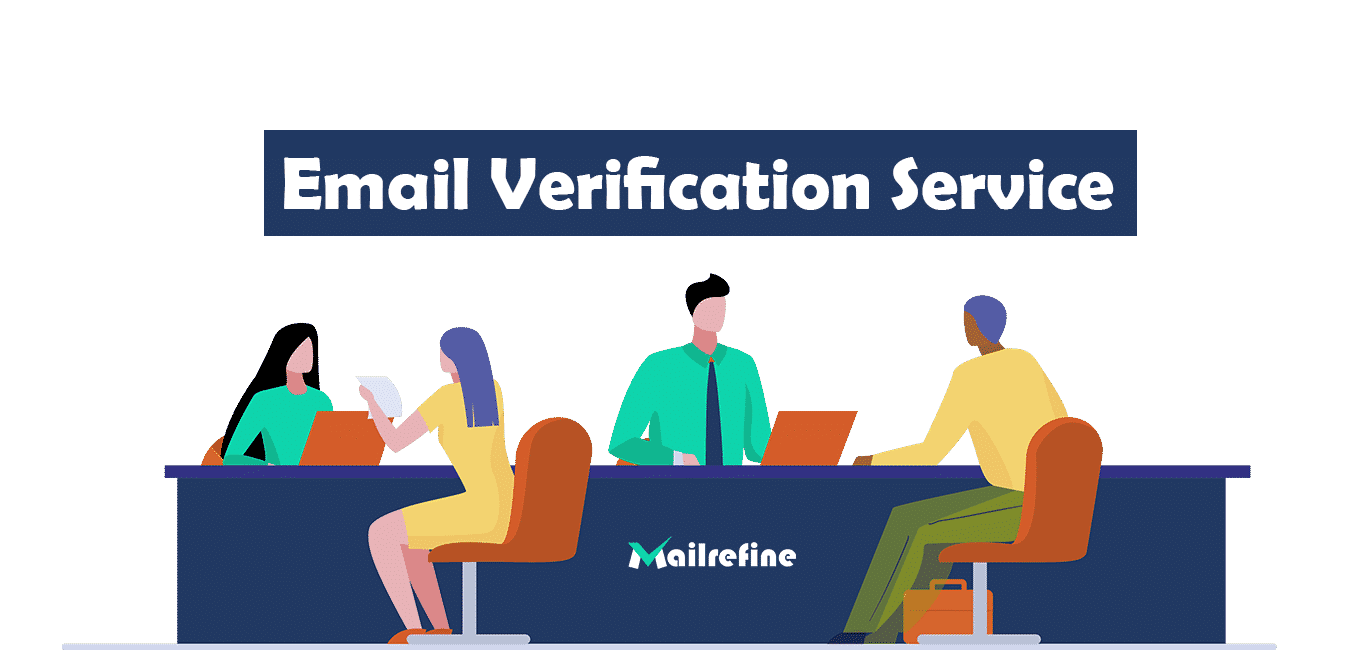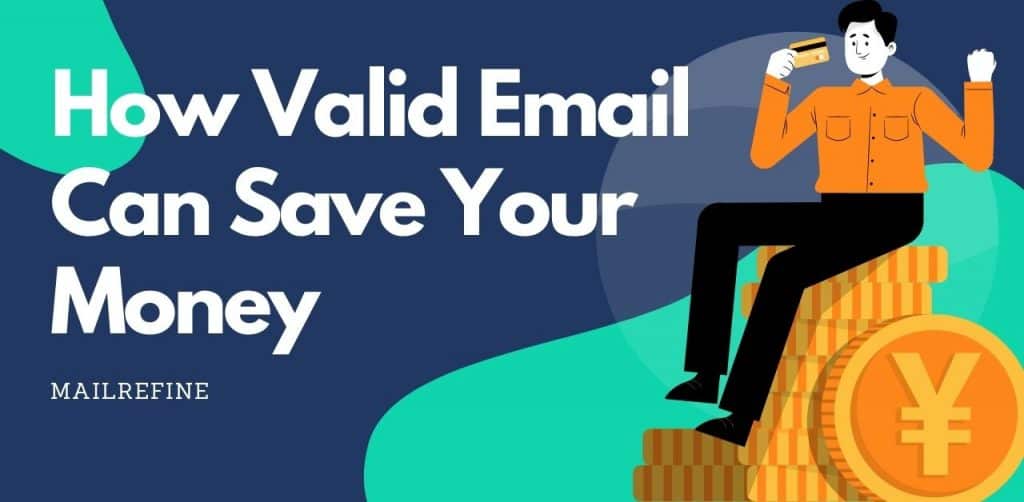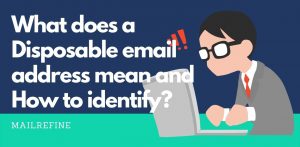If someone asks you how valid email save money, you’ve to first explain to them how email marketing works. Plus, how valid email and email verification are closely connected with email marketing. A recent study found that email marketing is the most effective strategy among all other digital marketing types.
But there is a catch. Email marketing is sensitive to various factors. One of them bounces back. What is bounceback? It is when your emails never reach their destination. I’ll explain it in more detail down below. Email verification tools can make sure that none of your emails gets a bounceback.
These verification tools are a vital part of the process of email marketing. Without integrating an email verification tool into your email marketing strategy, any promotional campaigns you run will likely be nearly impossible.
What is a valid email address?
A valid email address is a broad term for email addresses that can both receive and send out emails. Email service providers (ESP) like Yahoo Mail or Gmail can help you obtain a valid email address. People usually use Yahoo Mail or Gmail for personal use. Companies often provide their employees with corporate email addresses for work purposes. Both private and corporate email addresses are technically the same. They differ only in their usage.
So then, what is an invalid email address?
Invalid email addresses are simply addresses that don’t exist. People sometimes subscribe to certain services with an invalid email address like abc@xyz.com. If xyz.com doesn’t exist, nobody can send an email to XYZ’s servers. However, there are also sites like https://temp-mail.org/en that provide temporary email addresses that stay live for a certain period, typically a day or a week.
They can be used to send and receive emails just like any other email address. After that, those email addresses are rendered dead or invalid. They are technically valid emails, but they are still unusable for marketing. People usually do this for security purposes. Sharing personal or work email everywhere on the web poses a serious threat to our security.
How to find a valid email address?
For email marketers, making sure that promotional materials go to the inboxes of valid emails is a big part of the operation. There are some ways to find out the validity of an email address. If you’re just thinking of sending a few emails, you can use Google Admin Toolbox or GAT for short.
However, if you’re thinking of mailing in bulk, the most effective way would be to use Email verification tools like verify email addresses without sending an email. These tools will make sure that all of your emails are sent to valid email addresses. The only variable afterward is the response of your customer base.

How to verify an email address?
There are two ways that you can think of verifying email addresses. One, as stated above, you’re verifying a single or two email addresses. In that case, an email verification service is not worth the price. You can follow the steps below to verify the email manually-
Look for the @ sign in the email. The first part is the identifier of the owner of that email address. The latter part is the domain that hosts that email. It is called the validity of the syntax of an email. All emails follow this syntax rule. If an email address reads otherwise, it’s a false address. Then you need to see if a server exists to host that email. Without a server, an email address cannot receive or send any mail.
For example, say that an email reads xyz@amazon.com. A server needs to exist first for this email to work properly. You first need to look for amazon.com in your Chrome, Edge, or Firefox browser. If you see that a server amazon.com exists, then there is a good chance that that email does exist on that server. However, a domain server simply cannot ensure that an email will exist on its server.
You also need to ensure that the identifier (the part that comes before @ in an email address) is correct. There is no typo or anything. Now you need to ping the email to make sure that it’s valid.
So, what is pinging?
Without getting too technical, it’s like poking someone to grab their attention and making sure that they are listening. Similarly, pinging the email address will get you a response. If you get a response, then it’s a valid email.
So, how can you make an email response to your ping?
You can use an email pinger for this. If you don’t own any tool or service that can ping an email address for you, then you can use Google Admin Toolbox for the same purpose. After pinging an email server, if the response is positive, then it’s a valid email. However, if you get a negative response, it means that the address is not valid.
Make sure that the email address is not temporary.
We have talked about disposable or temporary email addresses before. Sites like https://temp-mail.org/en provide disposable email services. The word ‘temporary’ is the only variable here. These email addresses may exist for an hour, a day, a week, or maybe even a month. But its sole purpose is to be disposable. So they can’t be considered valid emails. Nobody uses them for mission-critical functions.
For instance, some sites don’t give us access without signing up with an email first. People sometimes use disposable email to access these websites as they don’t want them to send promotional material to their personal email addresses.
So even if you get a positive ping response from an email address, you have to make sure that the address is not temporary. Otherwise, in the future, your emails may bounce from that address as it has expired and is no longer valid.
Make sure that the email address is still valid when sending emails in the future.
Businesses change all the time, and so do the services that they use. A business may shift all its mail addresses from one server to another or from one service provider to another for various reasons. The email you have verified now may not be valid in the future, even after following all the steps stated above. You have to start all over again in this case if you need to make sure that your email reaches its targeted destination.
Can my email still bounce from a valid email address?
Yes, it is definitely possible. There are two kinds of email bounces, that is when your email doesn’t reach its destination. One is called a soft bounce. A soft bounce happens when the email address is valid, but the address can no longer receive emails because of size or space constraints. The other is called a hard bounce. A hard bounce happens when the email address is not valid, and your email will never reach its intended destination as a result.
How valid email save money?
A valid email is a valuable marketing lead. Any marketing campaign will fail if it pursues the wrong leads that don’t generate any business growth. One valid email may not be all that important for a business, but if you’re talking about hundreds or thousands of emails, you must make sure those are valid emails.
Every email is a potential outlet for a client to reach you back for the services they seek. They need those services regardless of if you exist or not. They will simply go to someone else. So you need to make sure that the outlets, i.e. valid emails, are appropriately used. It’s also where email verification services enter the discussion.

Why use an Email verification service?
What if you need to send emails in bulk? In this case, you simply cannot verify valid emails manually. It will take far too much time and human resources- and money in effect- to verify bulk emails. And even if you have the human resources and the time to verify the emails manually, it’s simply a waste. Email verification services are far more convenient and cost-effective in the long run.
However, there are some free tools and services that provide similar valid email verification services for free. There is nothing wrong with using these services. However, these tools are practical to validate a single or a handful of emails. They will simply not provide you with the same flexibility or service quality that a paid email verification service will offer you. Nothing in this world is truly free.
Most of these free email verification services are just a demo to hook you into their paid model. They limit the number of emails you can verify or the number of times you can use their service. After that, you have to pay to continue using their service.
If your business depends on email marketing, it’s best not to rely on free services that may or may not have questionable methods. Instead, choose an email verification service provider whose business model aims to provide you with the best solution available and to make sure you’re getting your money’s worth.
Are there any drawbacks to using an Email verification service?
None. It’s as simple as that. But, as I stated before if you’re thinking of validating a single or a handful of emails, using an Email verification tool may not be the most cost-effective solution for you.
The different kinds of verification statuses:
In the image example given above, to the right, you can see ‘Invalid’ in a pink box that signifies the result of your email validation query. It’s one of several types of Status that the system will give you to tell you how your emails will behave once they are sent to their respective destinations. These are the verification statuses-
Valid: This is a valid email. You can use it without any problem.
Accept all: The email server’s protocol is configured to tell it to receive all emails. If you send an email to this address, it may bounce.
Invalid: The email is invalid. It’s unusable.
Unknown: Any app can’t determine why it can’t communicate with this email server. A block or a time-out from the email server’s side may prohibit the app from knowing the verification status.
Webmail: The email address is a webmail address (gmail.com, yahoo.com, and so on) that has not been validated.
Disposable: The email is temporary. It was created using a disposable email service. Although it hasn’t expired yet, it will expire soon. You shouldn’t use this email.
Conclusion:
So why go through all this hassle, right? It’s to make sure that your email marketing campaign succeeds. You can end up being blacklisted or suspended altogether by the email service providers or the Internet Service Providers if your email marketing campaign behaves like one used by the spammers. You can even end up in spam boxes without even knowing why your potential clients aren’t responding to your emails.









